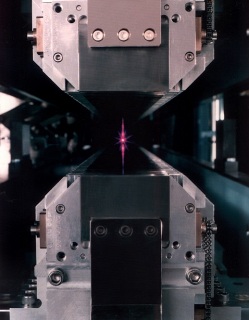Jun 26 2015
The new Berkeley Center for Magnet Technology (BCMT) aims to develop advanced magnetic systems by bringing together experts in research and development from across Berkeley Lab. This center will enable coordination and communication on magnet-oriented projects, which would be beneficial for medical, engineering and basic science applications.
 This undulator is an insertion device as used in storage-ring-based synchrotron light sources like the Advanced Light Source at Berkeley Lab.
This undulator is an insertion device as used in storage-ring-based synchrotron light sources like the Advanced Light Source at Berkeley Lab.
The director of the Accelerator Technology and Applied Physics Division (ATAP), Wim Leemans, and the director of the Engineering Division, Kem Robinson, have led the development of BCMT. The head of ATAP’s Superconducting Magnet Program, Stephen Gourlay, is to lead the BCMT.
Gourlay states that the BCMT would enable Berkeley Lab to gain recognition as “a go-to laboratory for state-of-the art magnetic systems”. The center would be studying magnets used in synchrotron-light sources, nuclear science and accelerator-based high-energy physics.
In February, the DOE had awarded Berkeley Lab a three-year, $1.95 million grant for the development of lightweight superconducting magnets. The size of particle beam delivery systems can be reduced when powerful magnets that are light in weight are available. This would help increase the practicality of using such delivery systems for treatment of cancer, and for other applications.
Scientists and engineers at Berkeley Lab will continue their research on magnet technologies for free-electron lasers, such as SLAC National Accelerator Laboratory’s Linac Coherent Light Source II project; critical magnet components for synchrotron light sources, such as Berkeley Lab’s Advanced Light Source; and for advanced particle accelerators that are used in high-energy physics applications.
The Associate Laboratory Director for Physical Sciences at Berkeley Lab, James Symons, stated that for the complex R&D projects on magnets, coordination played an important role. The BCMT would be effective in bringing together researchers for study on magnet technologies.
The BCMT would be a one-stop shop for industrial partners and non-DOE agencies who require R&D and advice on magnet technologies. These include superconducting magnets, advanced permanent-magnet arrays, superconducting and normal-conducting hybrid technologies, and for energy and biomedical applications.
“Having an integrated center like this,” says Robinson, “anybody coming in to the magnet center will be plugged into all available technologies.”